The first sculpture I am going to reflect on is my clay model. I have never worked with clay before so I was very nervous and did not have very high hopes in my ability. My model for the clay was my flat-mate Forester, as I believed I could capture his character and emotion through the sculpture because I know him well. At the start, I struggled with keeping the clay and gravity, over time the clay would fall and build up around the neck not allowing me to have enough structure on the head to mold the shape of my model. Over the weeks and lots of help from James and Ziggy, I was able to start constructing more detail and getting more accurate proportions. I believe this was a very good introduction to verisimilitude. Due to the nature of the model being a human we were tasked to create realism and emotion through the clay sculpture. We also had a zoom meeting with American figure sculptor Lisa Osborn where she ran us through ways to create emotion and give us constructive feedback. One of the main points relating to the models was to create an emotion on the face because the majority of our models were just straight faces making it extremely hard to create verisimilitude. Overall I believe I could have done better but for my first attempt at clay sculpting and a lot of help from others, I am happy with the near-final product of my sculpture.
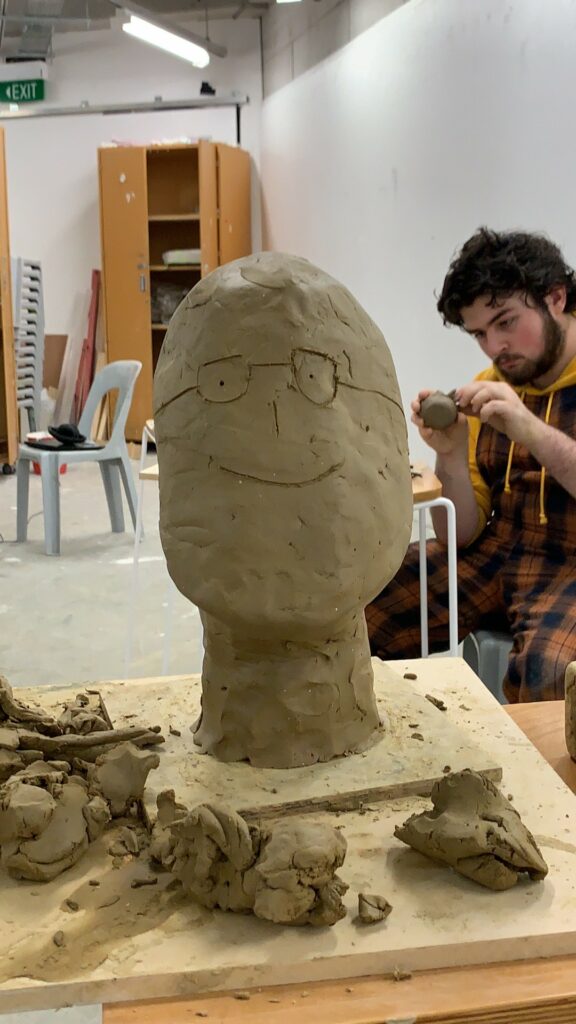
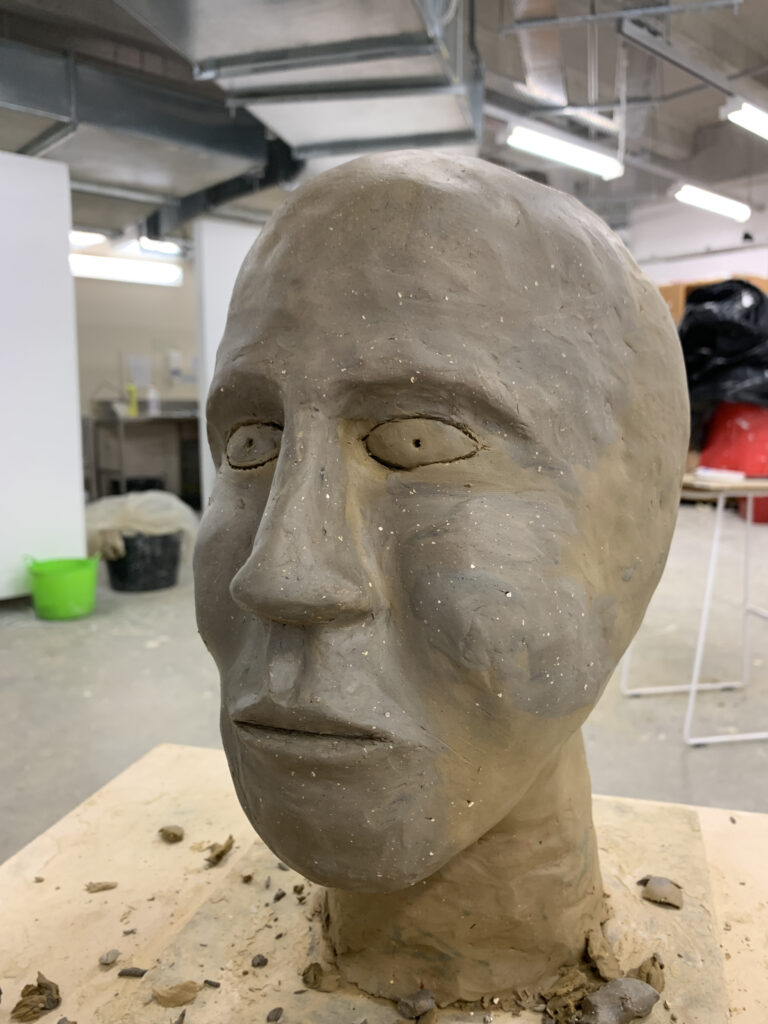
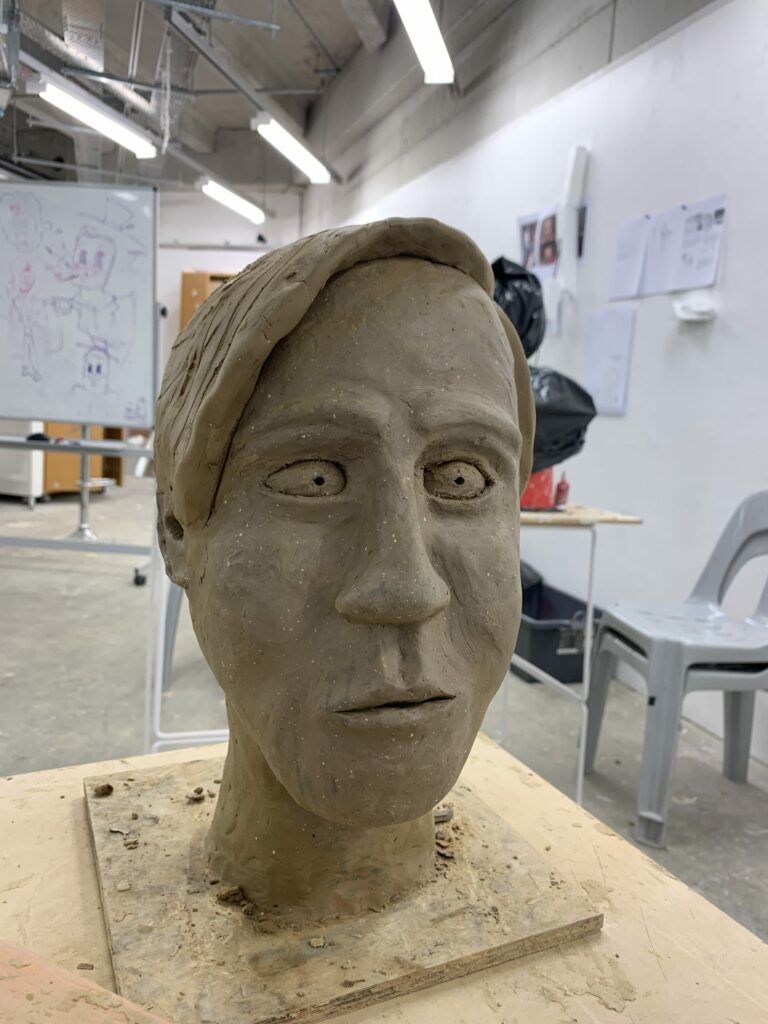
The second piece I am reflecting on is my 3d modeling. The main goal of this task was to get an item that had meaning and emotion behind it and 3d scan it using photogrammetry software and then put it into software to isolate the item from the background and create a 3d print or laser cut of the model. At first, I had 2 ideas a film camera and an NFL ball, both of these items had meaning to me but I decided to proceed with a film camera as there is a contrast between using photogrammetry to 3d model a camera was an interesting concept. The first 3d scan I did came out not too well so I went into the mesh mixer software and smoothed it out and caused it to turn into more of a blob shape than a camera. James instructed me to re-do my 3d scan and not clean it up in mesh mixer. He then showed me an artist Daniel Arsham who makes models of objects and specifically camera that push the expectations of a sculpture. I believe this helped me greatly within this task as I was very focused on literal and perfect recreations but by pushing the expectations it creates verisimilitude and emotion within my 3d scans and print.
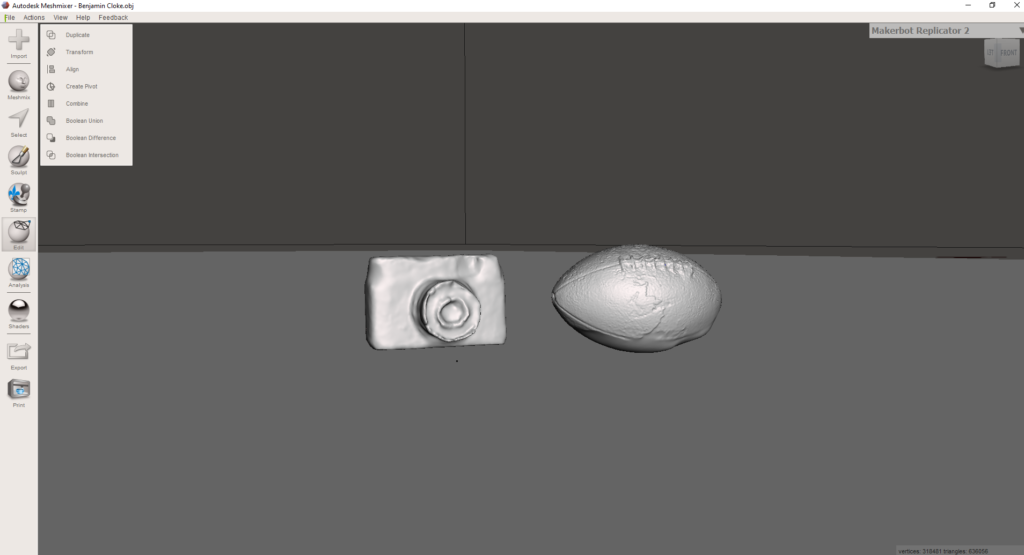
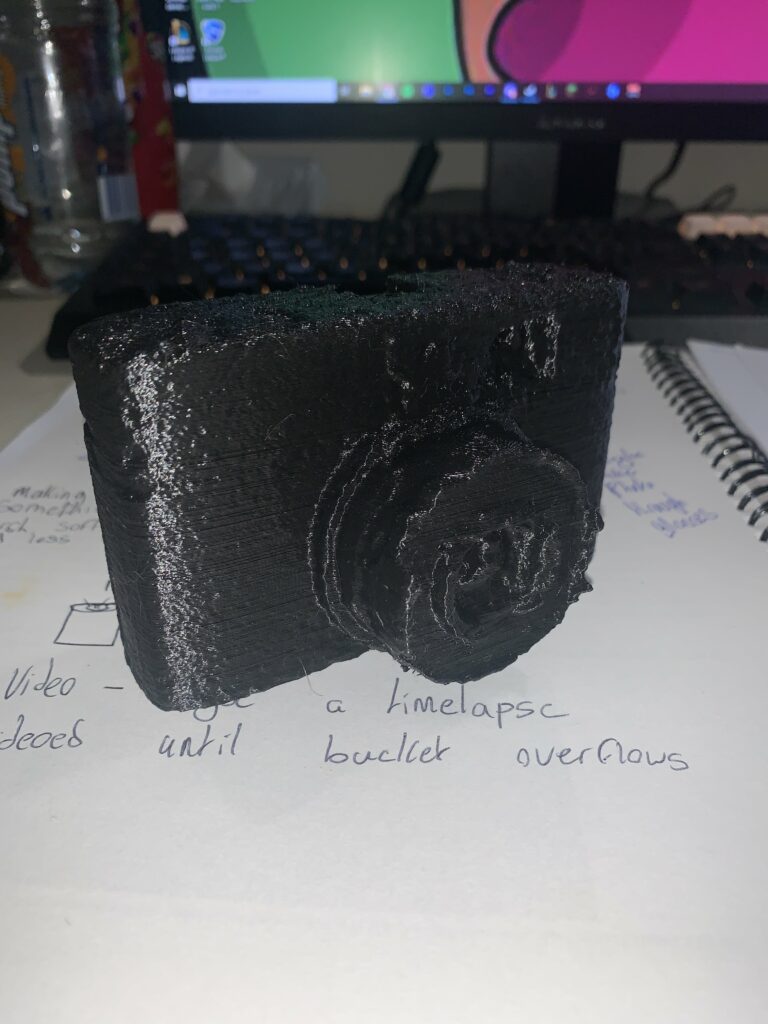
The 3rd and final piece I am reflecting on is my lockdown work using the software Rhino 7 but specifically the use of the Grasshopper plugin. Both Rhino and Grasshopper are programs that allow you to make renders and mesh using both numbers and geometry. Specifically, I am going to be reflecting on my Grasshopper animation. One of the main basic functions in Grasshopper is Voronoi 3d and I thought this was a good starting point for me to start learning Grasshopper. This process was pretty simple and I didn’t struggle with it as all the nodes were doing was telling Rhino the population of the cube and how spaced out it was when the anchor point was going through the center. I was also able to have a look at some other simple nodes such as color changing. By learning this simple animation I was able to wrap my head around mainly 3d aspects and basic commands such as panels, number sliders, and basic mesh functions.
One artist I found who uses mesh software’s to make geometric 3d animations is Andreas Wannerstedt. Andreas focuses on geometric loops that an aesthetically pleasing, and although some of my works have been pushing expectations of perfect Andreas is still an artist I will continue to follow and gain inspiration from due to their extensive knowledge and creativity within and around using 3d software’s. One aspect of his work that has inspired me is the loops he focuses on in his works, this allows them to be eye-catching and engaging to the viewer. And although Andreas mainly uses a different software called Cinema 4d and I am learning Rhino they are both similar and do similar things meaning I am still able to learn and use Andreas as an inspiration to further works to come.
